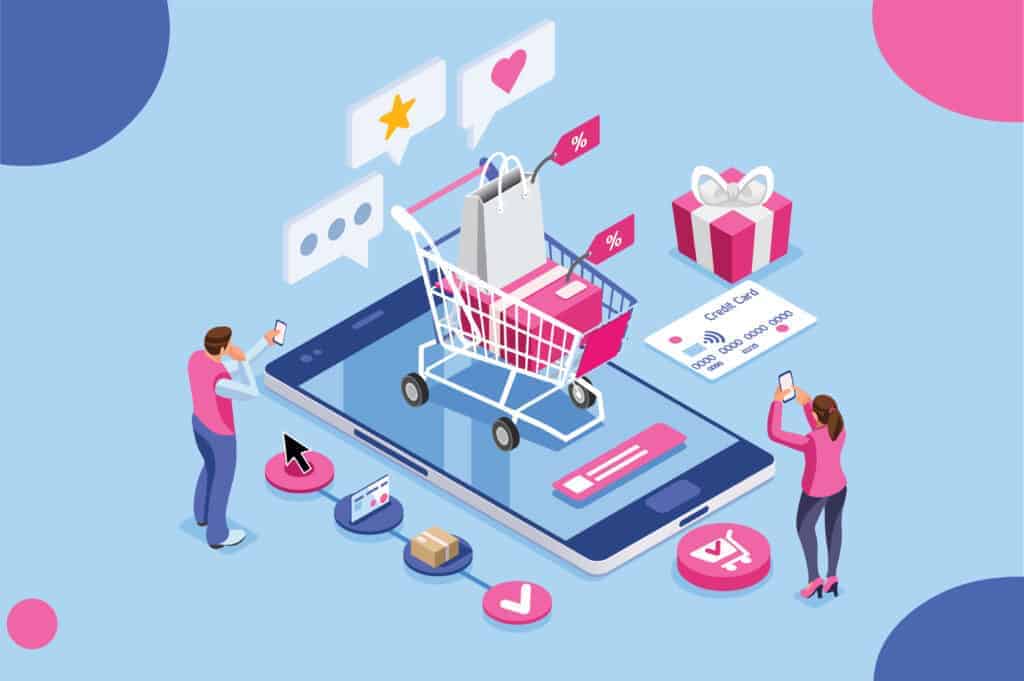E-commerce experts are saying it: “Omnichannel retail” is the future of e-commerce. So what are you waiting for?
Omnichannel retail, also known as omnichannel commerce, is a multichannel sales approach that focuses on providing a seamless customer buying experience.
With strong omnichannel retailing, customers can easily navigate between different touch points. Implementing this personalized customer experience strategy can achieve a better ROI that optimizes the customer shopping experience.
The statistics surrounding the success rate of offering customers omnichannel options are compelling.
Companies with strong omnichannel retailing retain more than 89 percent of their customers than companies with weak strategies. They also see a near 10 percent increase in annual revenue compared to 3.4 percent respectively, according to CutsomerThink.com.
One key to being considered a competitor within the e-commerce industry is offering diversity. Think about it. As a consumer would you rather have one option or five? And, how much does the ability to access real-time information play into your overall customer experience?
More options = increased customer satisfaction = profitability. This makes your e-commerce business a fierce competitor in the future retail marketplace.
Today consumer behavior is captured through the virtual presentation of products they come across on social media platforms. Facebook, Instagram and Pinterest lead the way in the world of online shopping. But with consumers drawn to making online purchases, e-commerce businesses can also use these very tools for customer product recommendation.
5 Popular Channels for E-commerce Service
The results are in. Nine out of 10 shoppers want a consistent omnichannel retail experience, which makes it critical to provide consumers with a variety of communication channels to choose from. Below are a few of the most popular.
LIVE CHAT
You can add a live chat widget to your e-commerce store. This allows customer service representatives to communicate with potential customers who have urgent questions in real-time. This is a proactive tool that engages shoppers in conversation as well as boosts overall conversion rates.
ONLINE FORMS
Online forms may seem like an archaic form of communication, but having this as a communication option for your online store offers customers a reliable and straightforward way for them to contact your brand. The standard fields typically include name, subject, email address, and a space for a custom message.
DIRECT MESSAGES VIA SOCIAL MEDIA
Integrating your e-commerce store with various social media platforms creates an easy way for customers to get and stay in touch and is an alternative to live chat.
Facebook Messenger for example, is a great customer service tool with the option to respond right away or send a customized auto-response with a list of FAQs or important links.
Providing an email address is a simple offering to customers looking to contact brands with customer service issues. A reported 62 percent of consumers said they want this option. It’s a simple way for businesses to provide personalized, timely and useful responses to customer queries.
ONLINE KNOWLEDGE BASES for Omnichannel Retail
This tool is more like a library of self-help resources where customers with time on their hands to find their own solutions. A common knowledge base may include FAQs or how-to and troubleshooting guides. About half of all customers prefer seeking technical support this way.
Tools for better e-commerce customer service
Because there are only so many hours in one day, this is where the right customer service software comes in to automate and manage customer inquiries.
INTERCOM
This is a chatbot tool that answers customers day or night and is used especially when a customer service agent isn’t available. With Intercom you can establish and nurture fruitful customer relationships by sending personalized messages that improve the overall customer experience.
HUBSPOT
Hubspot is the solution to creating a high-quality knowledge base. Using this platform makes it easy to transform a customer’s FAQs into a fully optimized knowledge base indexed into search engines.
GORGIAS
This software is intuitive and centralizes all communication channels, making omnichannel customer service more straightforward. It. While in communication with a customer, Gorgias pull data from their previous sales and communication history then compiles it into customer profiles for service agents to pull from. This results in high-quality, customized support.
Benefits of Omnichannel Retail – eCommerce for Business
IMPROVED EFFICIENCY
Developing an omnichannel retail strategy gives retailers the added benefit ability to provide a consistent experience to clients across all platforms while simultaneously equipping retailers with the best responses to customer needs.
ENHANCED DATA COLLECTION
Once a business becomes visible to consumers across multiple channels, the results begin to speak for themselves. The ability to track customers across multiple channels while noting preferences provides a more personalized customer experience and increases the likelihood of impulsive buying.
INCREASED MARGINS
In traditional retailing huge discounts are offered only to items not selling quickly in specific stores. However, businesses can sell these products to customers nationwide at the full price through omnichannel retailing.
INTEGRATED DATA ANALYSIS & INTEGRATION WITH OMNICHANNEL RETAIL
Offering customers multiple communication channels gives your business access to several information streams, which you need to understand to meet consumer needs and demands. By incorporating analytics into your strategy, you’re capable of quantifying, reviewing and understanding communications with your clients.
Every business should have an omnichannel retail strategy that sustains customer experience and improves your ROI. A retail company of any size can implement an omnichannel experience for consumers. To find out more about integrating this option within your e-commerce setup click here.
